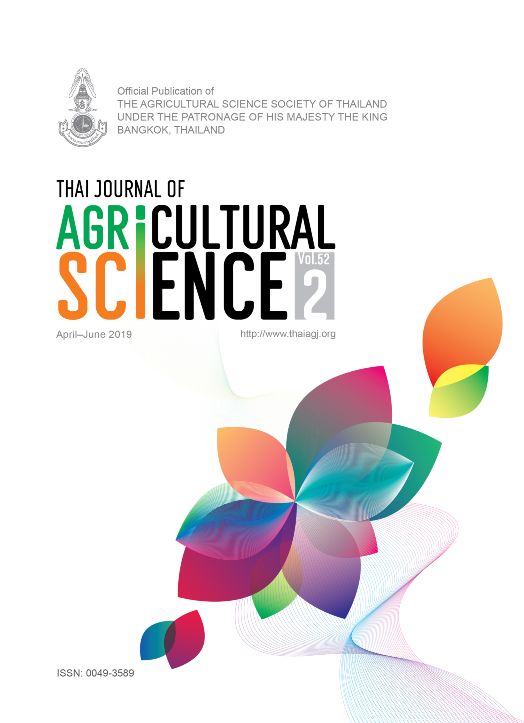Identification of SCDR 1 and P5CS Genes in Cultivar of Environmental Stress Tolerant Superior Sugarcane (Saccharum officinarum L.)
Main Article Content
Abstract
Sugarcane (Saccharum officinarum L.) is among the important commodities of the commercial sector since it accounts for 65% of the world’s sugar production. Indonesia is the world’s eighth largest country in terms of productivity, planting area and yield of sugarcane. Environmental stress due to climate change is among the factors that may cause negative impact on the production of sugarcane. The purpose of the present research was to determine genotypic profile of sugarcane cultivars tolerant to environmental stress, as well as lineage based on SCDR 1 and P5CS genes. The methods used in this research were DNA-specific sequence amplification by the PCR method and analysis of analog genetic lineage based on sequences of SCDR 1 and P5CS genes. SCDR 1 was a gene involved in the responses to drought, salinity and oxidative stresses in sugarcane, while P5CS was involved in the responses to drought stress and showed a negative correlation to sucrose productivity under drought stress conditions. The presence of these two genes in the tested sugarcane cultivars indicated a tolerant trait of environmental stress. The research found that the cultivars of PS 41, PS 58, PS 384, PS 851, PS 864, PS 865, PS 881, PS 882, PS 891, PS 921, PS 951, PS 80.910, PS 80.1649, PS CO 902, PS JT 941, Kentung, BZ 132, KK, TLH 2, PSDK 923, BL, PS 862, PSBM 901, and VMC 76-16 were superior sugarcane cultivars due to the presence of those two genes. Sequence similarity level of SCDR 1 and P5CS genes in PSDK 923 and VMC 76-16 cultivars with Saccharum genus is high, namely 100% and 61.2%.


